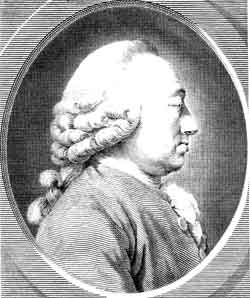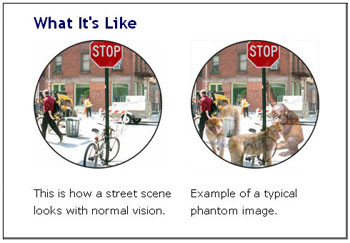“I see tiny men with hats” aka Charles Bonnet Syndrome
Severe vision loss and blindness in the United States is an unfortunate reality. Conditions like macular degeneration and diabetic eye disease are often the culprits. When blindness does occur, a significant number of patients will inexplicably begin seeing brilliant, colorful, vivid, and reoccurring visual hallucinations all while being otherwise perfectly sane. This bizarre and often unsettling condition is referred to as Charles Bonnet (“bō-NAY”) Syndrome.
 Who Was Charles Bonnet?
Who Was Charles Bonnet?
Charles Bonnet was a Swiss philosopher who, in 1760, first described this phenomenon that would later bear his name. Bonnet’s grandfather was nearly blind in both eyes from cataracts (long before surgical repair was possible). Even with the visual impairment, his grandfather often described “seeing” complex scenes, people, animals, and even buildings and landscapes. Although Bonnet was quick to understand the link between blindness and visual hallucinations, Charles Bonnet Syndrome was not officially recognized as a defined psychological condition until 1983.
How is “vision” still possible with blindness?
The visual hallucinations seen with Charles Bonnet Syndrome are obviously not real but simply phantom visions. The brain desperately wants to continue using the eyes for visual stimulus. However when eye disease robs the brain of that ability… the brain essentially… makes stuff up! The process is quite similar to phantom limb syndrome where sensations, pain, or tingling are often noted in a previously amputated limb that is no longer there.
What do sufferers commonly see?
 Visual hallucinations from Charles Bonnet Syndrome are quite varied but most often involve patterns, animals, people, or scenes and commonly fit into the individual’s actual surroundings. One characteristic of Charles Bonnet visions is that they are commonly “Lilliputian” hallucinations meaning everything and everyone look much smaller than they would normally appear. This trait of Charles Bonnet hallucinations results in individuals commonly seeing small pixie-like figures of varying colors and appearances.
Visual hallucinations from Charles Bonnet Syndrome are quite varied but most often involve patterns, animals, people, or scenes and commonly fit into the individual’s actual surroundings. One characteristic of Charles Bonnet visions is that they are commonly “Lilliputian” hallucinations meaning everything and everyone look much smaller than they would normally appear. This trait of Charles Bonnet hallucinations results in individuals commonly seeing small pixie-like figures of varying colors and appearances.
These hallucinations usually occur during down time and not while the patient is active. Additionally, these hallucinations are visual only and do not involve interaction, smell, sound, taste, nor touch and usually are actually quite soothing and non-threatening when they occur.
This. Is. Normal.
Yes, visual hallucinations from Charles Bonnet Syndrome are in fact normal and occurs in otherwise completely mentally healthy individuals. Suffers realize that these visions and images they are seeing are not real. Actual statistics for Charles Bonnet Syndrome are quite difficult to fully assess. This is not surprising as individuals who experience these hallucinations are hesitant to discuss them with friends, family, or doctors for fear of stigma or being labeled as mental insane. It is estimated by most researchers to be extremely common affecting anywhere from 14-40% of individuals with recent blindness.
There is also no treatment for Charles Bonnet Syndrome. These visions occur off and on for the first 12-18 months after blindness but usually become less and less frequent over time. The most important treatment is to educated patients that although this condition can be unsettling, it is a normal neurological response to recent blindness and not a sign of mental illness.
Feel free to follow up with any questions or comments and thank you, as always, for tuning into Eye to the Future!
- Nick Wolf, OD
For more information on Charles Bonnet Syndrome and/or talking about this condition with blind family members please visit the Royal National Institutes of Blind Peoples’ excellent page about this condition.


